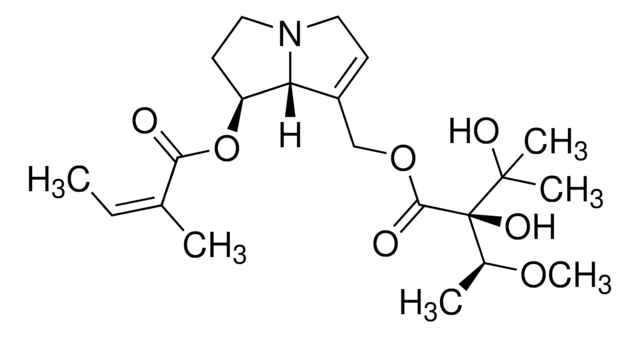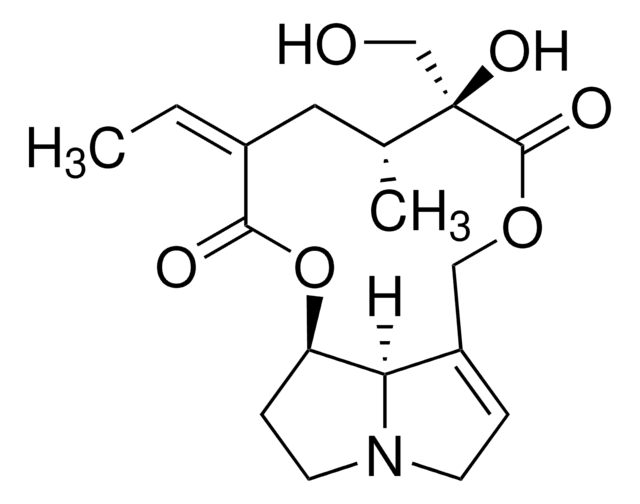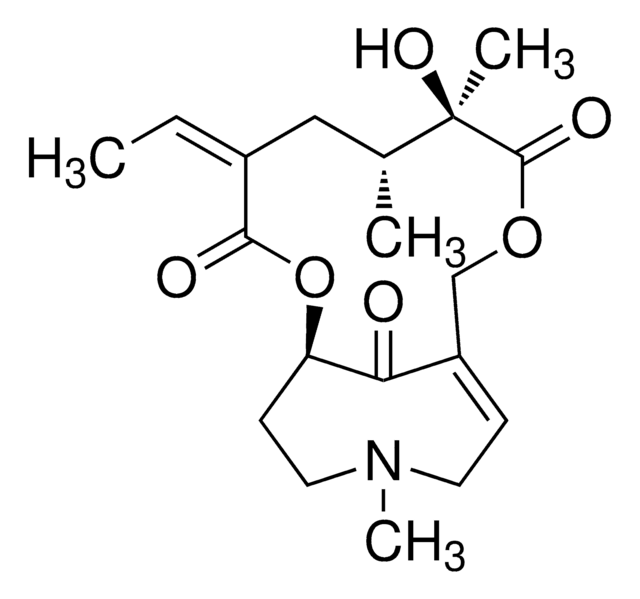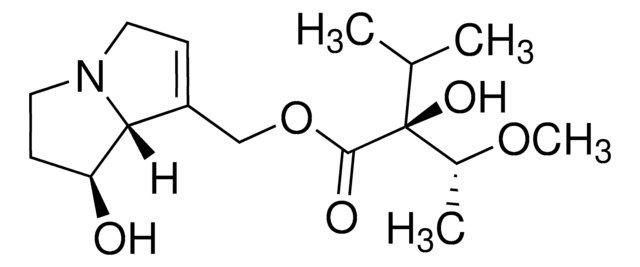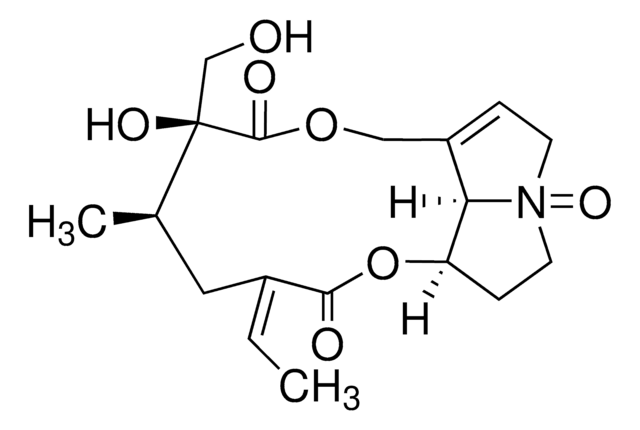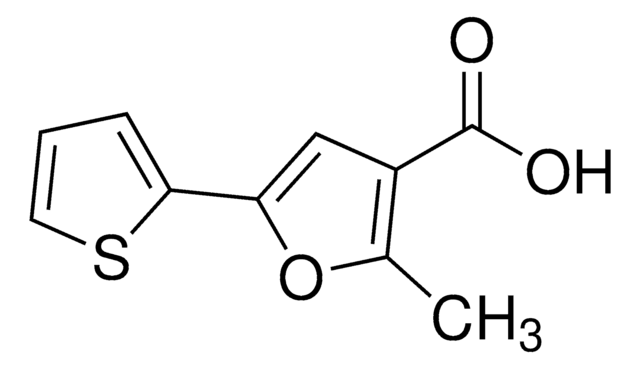R0382
Retrorsine
≥90% (HPLC), powder, retronecine-type pyrrolizidine alkaloid
Sinónimos:
Retrorsin, Senecionan-11,16-Dione, 12,18-Dihydroxy- (9CI), β-Longilobine, 12,18-Dihydroxysenecionan-11,16-dione
About This Item
Productos recomendados
Nombre del producto
Retrorsine, ≥90% (HPLC)
Quality Level
assay
≥90% (HPLC)
mp
208-211 °C (lit.)
SMILES string
C\C=C1\C[C@@H](C)[C@](O)(CO)C(=O)OCC2=CCN3CC[C@@H](OC1=O)[C@@H]23
InChI
1S/C18H25NO6/c1-3-12-8-11(2)18(23,10-20)17(22)24-9-13-4-6-19-7-5-14(15(13)19)25-16(12)21/h3-4,11,14-15,20,23H,5-10H2,1-2H3/b12-3-/t11-,14-,15-,18-/m1/s1
InChI key
BCJMNZRQJAVDLD-CQRYIUNCSA-N
¿Está buscando productos similares? Visita Guía de comparación de productos
Application
- as a mito-inhibitory pyrrolizidine alkaloid compound to induce necrotic liver injury in rats
- to induce hepatocellular injury in rats
- to arrest endogenous hepatocyte growth in mice
Biochem/physiol Actions
signalword
Danger
hcodes
Hazard Classifications
Acute Tox. 2 Dermal - Acute Tox. 2 Inhalation - Acute Tox. 2 Oral
Storage Class
6.1A - Combustible acute toxic Cat. 1 and 2 / very toxic hazardous materials
wgk_germany
WGK 3
flash_point_f
Not applicable
flash_point_c
Not applicable
ppe
Eyeshields, Faceshields, Gloves, type P2 (EN 143) respirator cartridges
Elija entre una de las versiones más recientes:
¿Ya tiene este producto?
Encuentre la documentación para los productos que ha comprado recientemente en la Biblioteca de documentos.
Nuestro equipo de científicos tiene experiencia en todas las áreas de investigación: Ciencias de la vida, Ciencia de los materiales, Síntesis química, Cromatografía, Analítica y muchas otras.
Póngase en contacto con el Servicio técnico